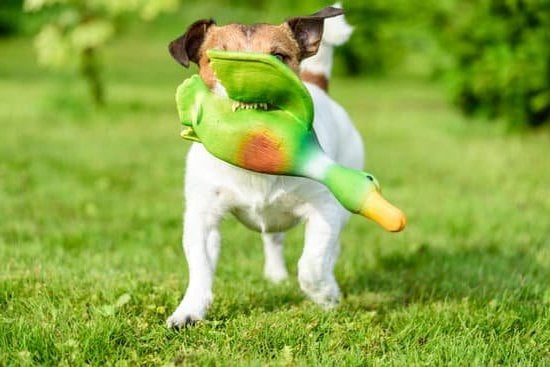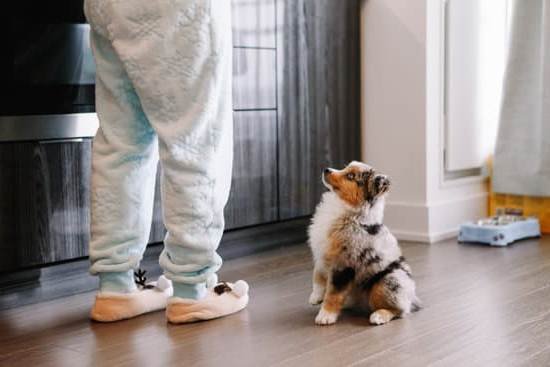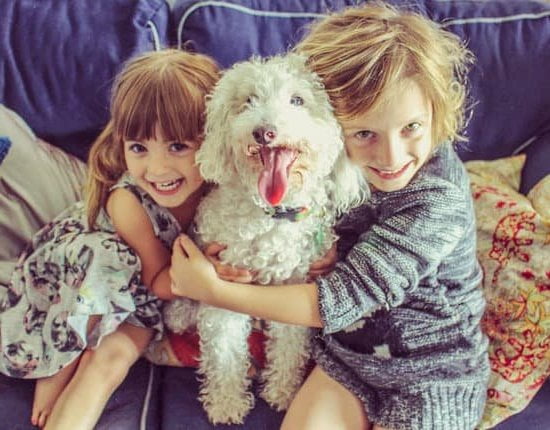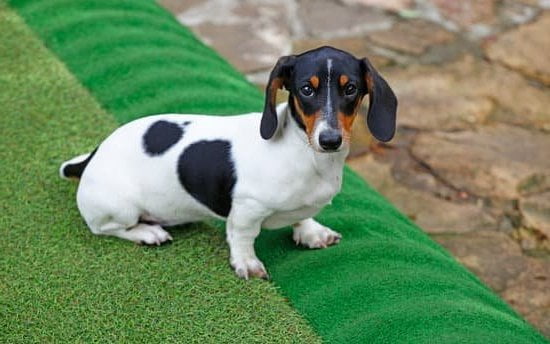Are you wondering, “How to train my dog to pee outside?” Potty training is an essential aspect of owning a dog, and teaching your furry friend to do their business outdoors can help maintain a clean and hygienic living environment. In this article, we will explore the importance of potty training for dogs and provide tips and techniques for successfully training your dog to pee outside.
Potty training your dog to pee outside has numerous benefits for both you and your pet. Not only does it help maintain a clean home environment, but it also promotes good hygiene and prevents indoor accidents. Additionally, training your dog to pee outside strengthens the bond between you and your pet, as it requires consistent communication and positive reinforcement.
Understanding your dog’s peeing behavior is essential for successful potty training. By recognizing signs that indicate when your dog needs to go outside, you can proactively take them out at the right times, reducing the risk of accidents indoors. Creating a schedule for potty breaks is also crucial in establishing a routine for your dog and setting them up for success in learning to pee outside.
Benefits of Training Your Dog to Pee Outside
When it comes to potty training, teaching your dog to pee outside has numerous benefits. Not only does it help ensure a clean and hygienic living environment for both you and your pet, but it also promotes good behavior and strengthens the bond between you and your furry friend. Training your dog to pee outside is an essential part of their overall development and well-being.
One of the main benefits of training your dog to pee outside is that it helps establish a routine for them. Dogs thrive on consistency, and by setting regular potty breaks outside, you can help them learn when and where it’s appropriate to relieve themselves. This can also prevent accidents from occurring inside the house, ultimately saving time and effort on cleaning up messes.
In addition, by teaching your dog to pee outside, you are providing them with the opportunity to get exercise and fresh air. Taking your dog for regular potty breaks outdoors allows them to explore their surroundings, interact with other animals, and enjoy the mental stimulation of being in a different environment. These outdoor experiences can contribute to their overall well-being and happiness.
| Benefit | Description |
|---|---|
| Establishing Routine | Regular potty breaks outside help dogs learn when and where it’s appropriate to relieve themselves. |
| Physical Activity | Taking dogs for potty breaks outdoors provides exercise, fresh air, and mental stimulation. |
Understanding Your Dog’s Peeing Behavior
Here are some key points to consider when understanding your dog’s peeing behavior:
1. Marking Territory: Dogs often pee as a way of marking their territory. This behavior is more common in unneutered males but can also be seen in spayed females and neutered males. By recognizing this natural instinct, you can begin to train your dog to understand where it is appropriate to mark their territory outside.
2. Communication: Dogs use urination as a form of communication with other dogs. They may pee to convey messages about their presence, social status, or reproductive availability. Understanding this aspect of their behavior can help you develop a training strategy that aligns with your dog’s natural instincts.
3. Anxiety and Stress: Just like humans, dogs may also pee due to anxiety or stress. This could be triggered by changes in their environment, routine, or even by being left alone for extended periods of time. Addressing any underlying anxiety or stress issues will be crucial in successfully training your dog to pee outside.
By taking these factors into account and observing your dog’s specific behaviors, you can tailor your training approach to effectively teach them how to pee outside.
Remember the importance of patience and consistency as you work with your furry friend – addressing their specific needs will lead to greater success in training them how to pee outside”.
Creating a Schedule for Potty Breaks
Understanding Your Dog’s Routine
Every dog has their own unique bathroom habits, so it’s important to pay attention to your dog’s signals and behavior. Some dogs may need to go out first thing in the morning, after meals, or before bedtime. By understanding your dog’s routine, you can anticipate when they are most likely to need a potty break and plan accordingly.
Establishing Regular Potty Breaks
Once you have a sense of your dog’s routine, create a schedule for regular potty breaks throughout the day. Take your dog outside at consistent times each day, such as first thing in the morning, after meals, and before bedtime. Use these opportunities to encourage your dog to pee outside by using positive reinforcement techniques.
Adapting the Schedule
As your dog becomes more accustomed to going outside to pee, you may find that they are able to hold it for longer periods of time. Adjust the schedule as needed based on your dog’s individual needs and behaviors. Be flexible and attentive to any changes in their routine or behavior that may indicate a need for additional potty breaks.
By creating a schedule for potty breaks and following it consistently, you can effectively train your dog to pee outside and minimize accidents indoors. Understanding your dog’s routine, establishing regular potty breaks, and adapting the schedule as needed will help set them up for success in learning this essential behavior. With patience and dedication, you can strengthen your bond with your pet while promoting good bathroom habits.
Positive Reinforcement Techniques for Outdoor Pees
When it comes to training your dog to pee outside, positive reinforcement techniques can be highly effective. Positive reinforcement involves rewarding your dog for exhibiting the desired behavior-in this case, peeing outside. This can help your dog associate peeing in the right place with good things, making them more likely to repeat the behavior.
One of the most common positive reinforcement techniques for outdoor pees is giving your dog a treat immediately after they eliminate outside. Choose a special treat that is reserved specifically for potty breaks, and give it to your dog as soon as they finish peeing outside. This will help them understand that going potty outside leads to delicious rewards.
In addition to treats, verbal praise and affection can also be powerful forms of positive reinforcement for outdoor peeing. Use a happy, enthusiastic tone of voice to praise your dog when they pee outside, and give them plenty of pets and attention. This will show them that you are pleased with their behavior and encourage them to continue using the designated potty area.
| Positive Reinforcement Techniques | Effectiveness |
|---|---|
| Treats | Highly effective – immediate reward |
| Verbal Praise | Powerful form of encouragement – reinforces good behavior |
Dealing With Setbacks and Accidents
Understanding the Reasons for Setbacks
While training your dog to pee outside, it’s important to acknowledge that setbacks and accidents are a normal part of the process. Understanding the reasons behind these setbacks can help you address them effectively. Dogs may have accidents due to various reasons such as illness, anxiety, or even changes in their environment. By identifying the root cause of the setback, you can tailor your training approach to address the issue and prevent future accidents.
Reacting to Accidents
When accidents do occur, it’s crucial not to scold or punish your dog. This will only create fear and confusion, making it harder for them to understand what is expected of them. Instead, clean up the mess thoroughly using an enzymatic cleaner to eliminate odors that may attract your dog back to the same spot. Remain calm and continue with your training routine without expressing frustration towards your pet.
Refocusing and Rebuilding Confidence
Setbacks can be discouraging, but it’s important not to give up on your training efforts. Continue to use positive reinforcement techniques when your dog pees outside as a way of refocusing their behavior. Additionally, consider gradually reintroducing new cues and commands for outdoor elimination. This can help rebuild your dog’s confidence and motivation in learning how to pee outside successfully.
Training a dog to pee outside can be a challenging process, but by addressing setbacks with patience and understanding, you can ultimately achieve success in building this important skill for your pet.
Tips for Training Older Dogs
As dogs age, they may face physical or behavioral changes that can make it more challenging to train them to pee outside. However, with patience and the right approach, it is still possible to successfully potty train older dogs. Here are some tips to help you navigate this process:
1. Be patient and understanding: Older dogs may have health issues or decreased mobility that affect their ability to hold their bladder or signal when they need to go outside. It’s important to be patient and empathetic as you work with your senior dog on potty training.
2. Adjust the schedule: Older dogs may have different bathroom needs than younger ones. Consider increasing the frequency of potty breaks, especially after meals or naps. By establishing a consistent schedule, you can help your older dog develop a routine for going outside.
3. Use positive reinforcement: Just like with younger dogs, positive reinforcement is key to training older dogs to pee outside. Offer treats and praise when your senior dog successfully goes to the bathroom in the designated outdoor area. This will encourage them to continue exhibiting that behavior.
4. Consider physical limitations: If your older dog has mobility issues or trouble getting outside quickly, consider making accommodations such as installing a pet door or using puppy pads in an indoor area closer to your dog’s resting spot.
By implementing these tips and being mindful of your older dog’s specific needs, you can effectively train them to pee outside and strengthen the bond between you and your furry companion.
Conclusion
In conclusion, training your dog to pee outside is not only beneficial for your household, but it also fosters a stronger bond between you and your furry friend. By understanding the importance of potty training and recognizing the benefits of outdoor peeing, you can effectively establish a routine that works for both you and your dog.
Remember that understanding your dog’s peeing behavior is crucial in creating a schedule for potty breaks. By being consistent and using positive reinforcement techniques, you can encourage your dog to eliminate outside. It’s important to celebrate every success, no matter how small, and to be patient with setbacks and accidents.
For those with older dogs, it’s never too late to start training them to pee outside. With patience and persistence, older dogs can also learn new habits. The key is to remain consistent in your approach and adapt the training techniques to suit your dog’s individual needs.
Ultimately, successfully training your dog to pee outside not only improves their behavior but also strengthens the trust and bond between you as their owner. Remember that with patience, consistency, and positive reinforcement, you can achieve success in teaching your dog where to relieve themselves – ultimately leading to a happier and healthier relationship for both of you. Now get ready for more outdoor adventures without worries about accidents at home.
Frequently Asked Questions
How Do I Train My Dog to Pee and Poop Outside?
Training your dog to pee and poop outside requires patience and consistency. Start by establishing a routine for bathroom breaks and take your dog outside frequently, especially after meals and naps. Reward your dog with treats and praise when they go potty outside to reinforce the behavior.
How Can I Attract My Dog to Pee Outside?
You can attract your dog to pee outside by designating a specific potty area in your yard and using cues like “go potty” or “do your business” when you take them out. You can also try using pee pads or artificial grass if you live in an apartment or don’t have a yard.
How Do I Stop My Dog From Peeing in the House?
To stop your dog from peeing in the house, it’s important to first rule out any medical issues that could be causing accidents. Once medical reasons are ruled out, address any behavioral issues by reinforcing outdoor potty training, cleaning up accidents with an enzymatic cleaner, and providing plenty of opportunities for bathroom breaks.
Consistency and positive reinforcement are key in preventing indoor accidents.

Welcome to the blog! I am a professional dog trainer and have been working with dogs for many years. In this blog, I will be discussing various topics related to dog training, including tips, tricks, and advice. I hope you find this information helpful and informative. Thanks for reading!





